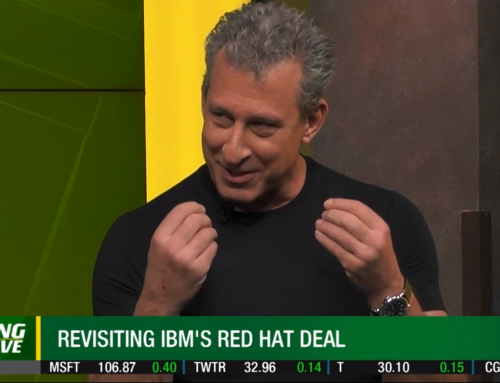In this SECOND of a five-part video blog series Jim Jockle, CMO of Numerix sits down with Paul Rowady, Director of Research at Alphacution to discuss the recent FinTech Revolution. They discuss how firms are gearing themselves towards a digital culture, and how companies are working to distinguish themselves in this new age.
The five videos cover the following:
Part 1: Paralysis by Analysis: Preparation & Analyzation for Digital Disruption
Part 2: IT Outsourcing and Transformation
Part 3: Revolutionizing Fintech: Looking into the world of Data Automation
Part 4: Technological Implications of Cultural Transformation
Part 5: Digital Noise in the Fintech Space
Jim Jockle (Host): What is the role of outsourcing? In the sense of at the end of the day traders are paid to trade. Financial advisors are paid to give advice and on the benefit and breadth of their customer base. Banks are meant to control and manage deposits. There’s still a fundamental core business but yet technology and the risk profile of all these institutions is the forefront of the conversation. We’ve seen a lot of departures of senior financial service professionals moving into the vendor landscape. What do you see the role of vendor’s kind of going forward into the future? Especially as it relates to that skillset concept of trying to onboard. Is the bank expected to be a financial services of a technology company? Or financial service company in this environment.
Paul Rowady (Guest): Let’s start with the original just simply IT outsourcing. Now I’m at the beginning of a study to look at our modeling in our framework in the context of the big IT outsourcing and business process outsourcing firms. So the following is essentially preliminary, but in the modelling so far it’s quite fascinating because the technology economics and technical signature, the revenue per employee is one of the key analytics that we use suggest that the IT outsourcing is purely a labor arbitrage and that the risk in that, I mean I can get why it’s done, because it’s a shorter term, I got to make my earnings, I got to cut cost, I got to move this to here, I’ve got these big organizations that specialize in doing this workflow, in doing this lower level kind of tasks, series of tasks and business process outsourcing. But they’re really not offering a whole lot of innovation, they’re just lifting out pieces of a process or tasks in a process and giving it to another organization whereby they get this massive discount. But by virtue of their so-called technical signature or technical leverage. What the risks of that is long-term and I think this is going to be a colorful narrative to explore as the modelling bears out and we get our heads further around this is that when you lift out a series of tasks or lift out a process like that, you lose control over the re-engineering aspects of that process or those series of tasks and that’s a serious long-term problem. I get the short-term, I need to save money now but once you’ve done that you’re no longer in control of trying to figure out can do that task more efficiently using this new Fintech toolbox doing more collaborative, doing more visualization, doing more analytics, doing more say do-it-yourself or self-service aspects to the workflow. That’s just one piece of your question the rest, since we’ve been clowning around, I’ve already forgotten.
Jockle: So, but that brings up an interesting question now, in the sense of Goldman Sachs has come out saying that it’s going to give up, you know, what has been its secret sauce and share it in terms of SEC EB. So and part of the underlying statement was its no longer a competitive advantage for the institution in terms of holding onto that massive element of technology. To the extent of losing some of that control over the backend of things that might be lower level, you know is there a competitive advantage that firms are giving up or are they seeing the competitive differentiator somewhere else.
Rowady: Yes, so they’re looking at it through a lens that is not easily detectable by the marketplace. Goldman doesn’t make mistakes like that. They’re just about the best in the business. By some of the modelling I’ve done, they’re one of the very few handful of firms that behaves like a digital organization that has a technical footprint and achieves the technical leverage that is close to a Google or a Facebook or a Netflix. Which are the so-called FANGs that represent a proxy for the digital frontier in terms of this technical leverage. The banking sector is a community is way, way, way, behind that and so in the case getting back to the question there you notice the firms that are able to do this kind of offering to the marketplace are some of the best in the business. I mean you look at what Citadel did originally with Citadel Solutions I think it was and then it became Omnium because you know the hedge fund investors were nervous that there was some lack of a Chinese wall for lack of a better term and then that was sold off to Northern Trust as a fund administration business and then Citadel’s come back. Citadel clearly one of the great leadership companies in the ecosystem, Goldman certainly there as well. My guess is one, if Goldman can offer some technology or some solution to the marketplace that is sufficiently commoditized to them that they’re really not giving up a whole lot of secret sauce and to the extent that they risk giving up access to secret sauce you better believe that they’re collecting the data. So if you develop a community of users of their solution they’re picking up some sort of precursor to alpha or some signal that leads to alpha that is sufficiently strong. It’s basically a behavior detection tool.



